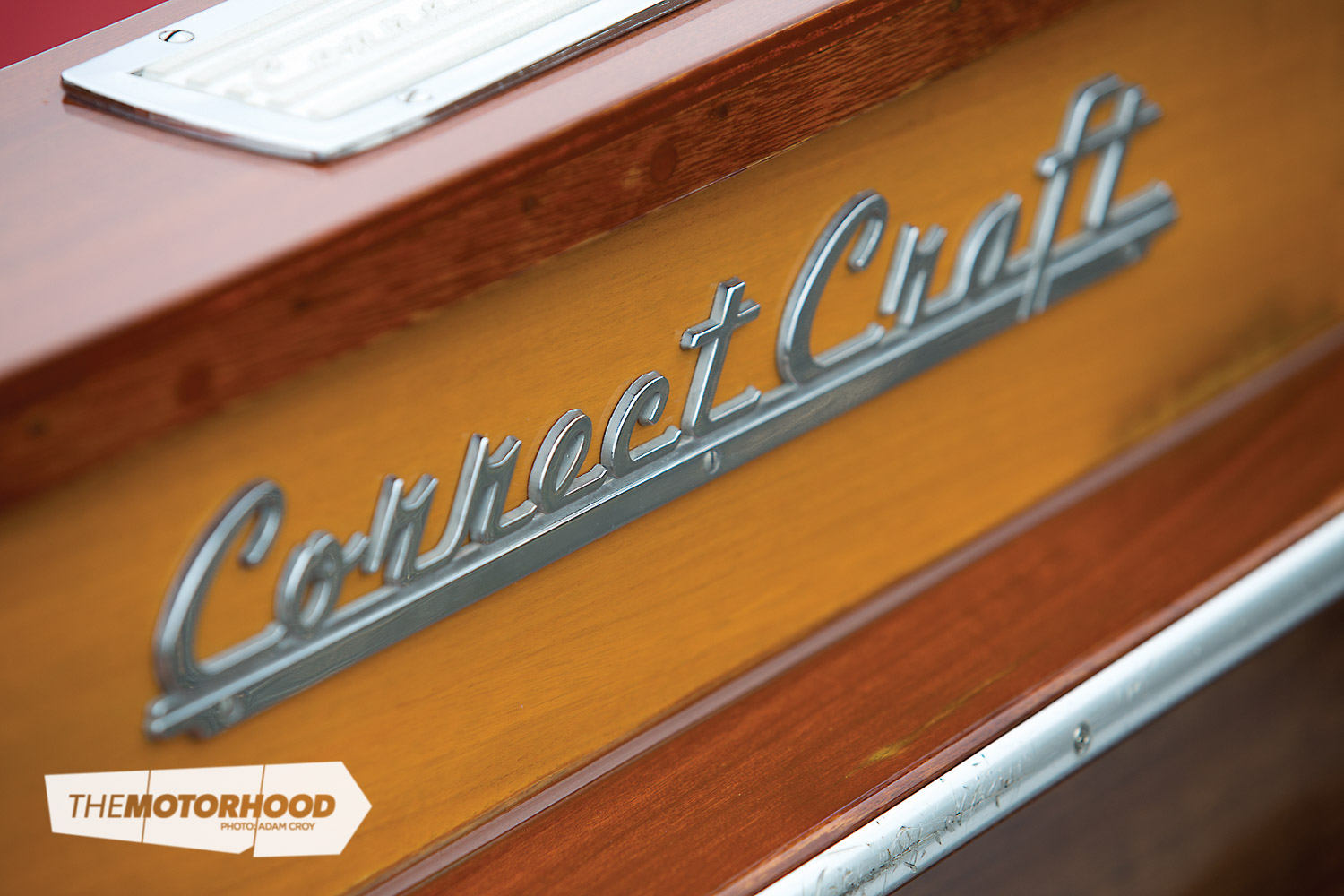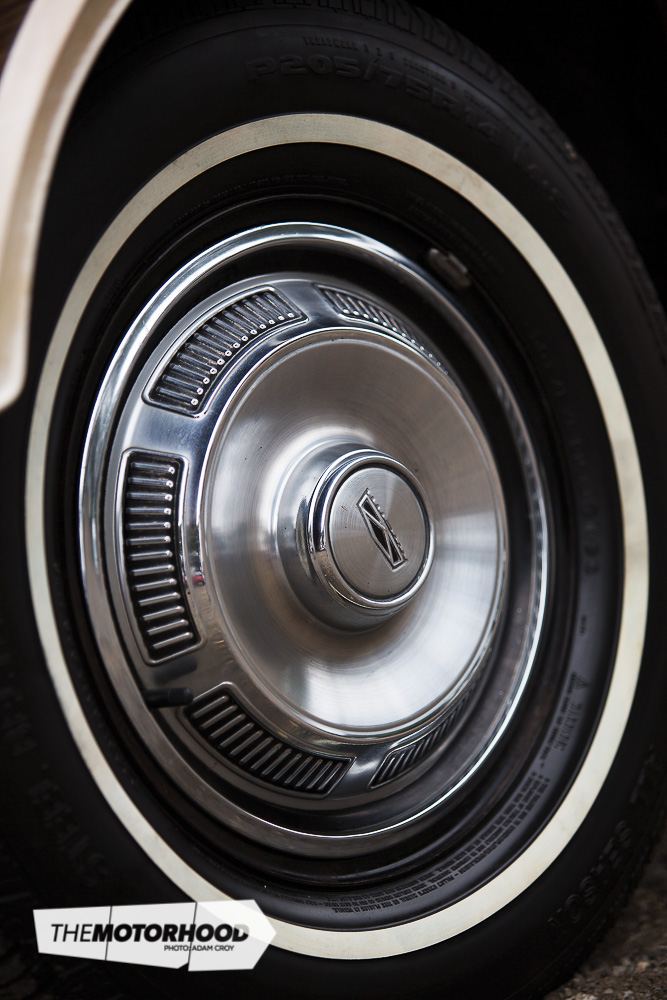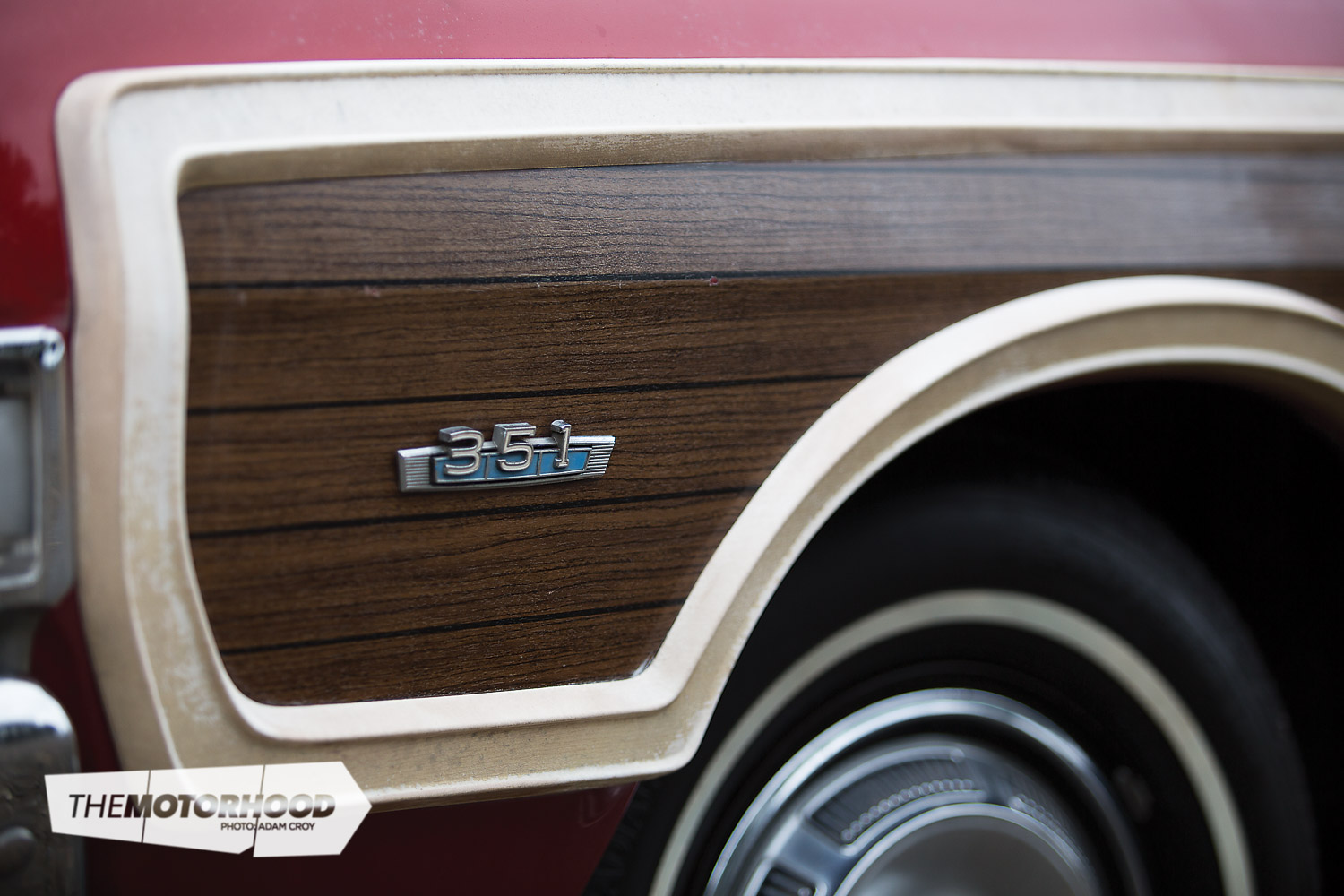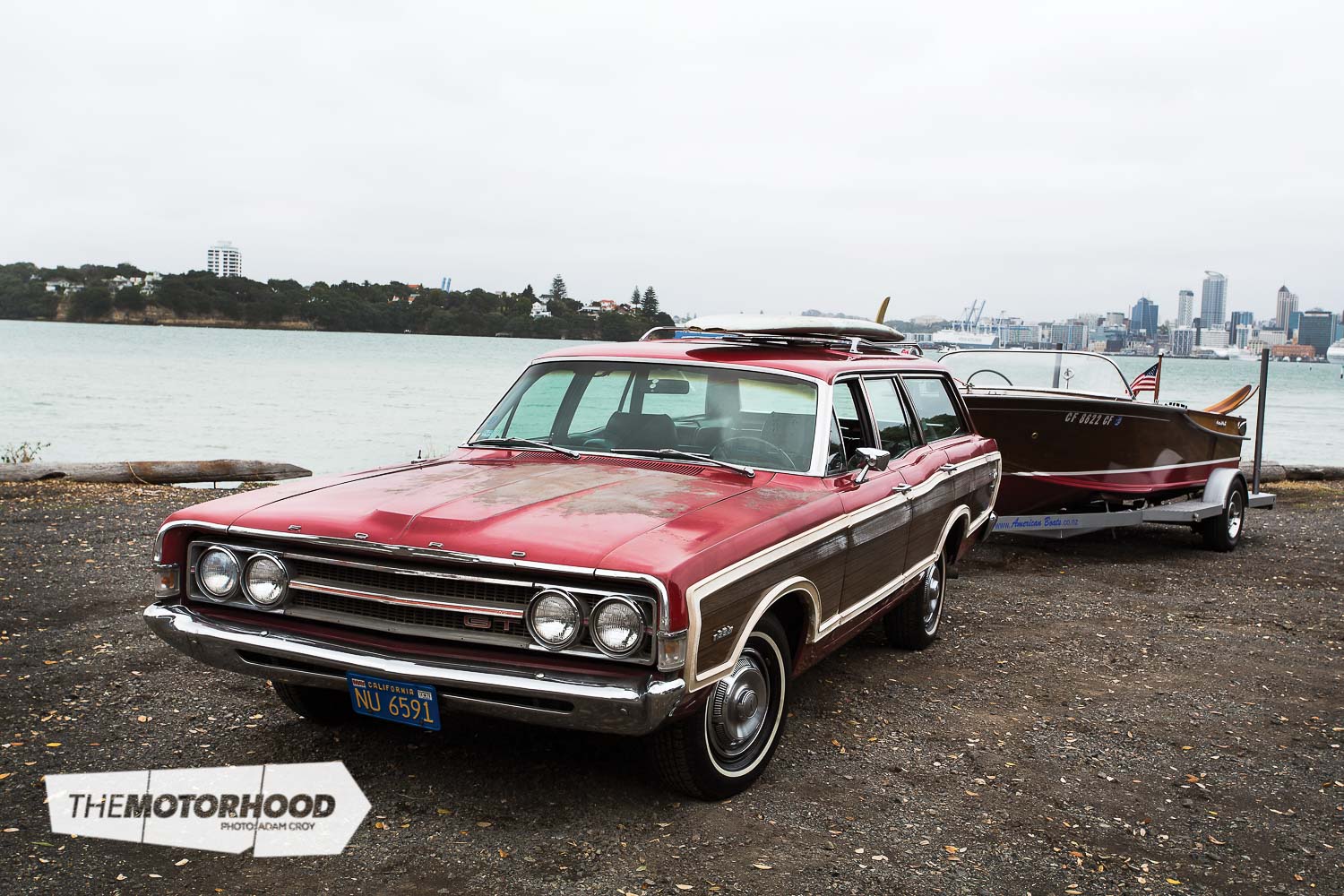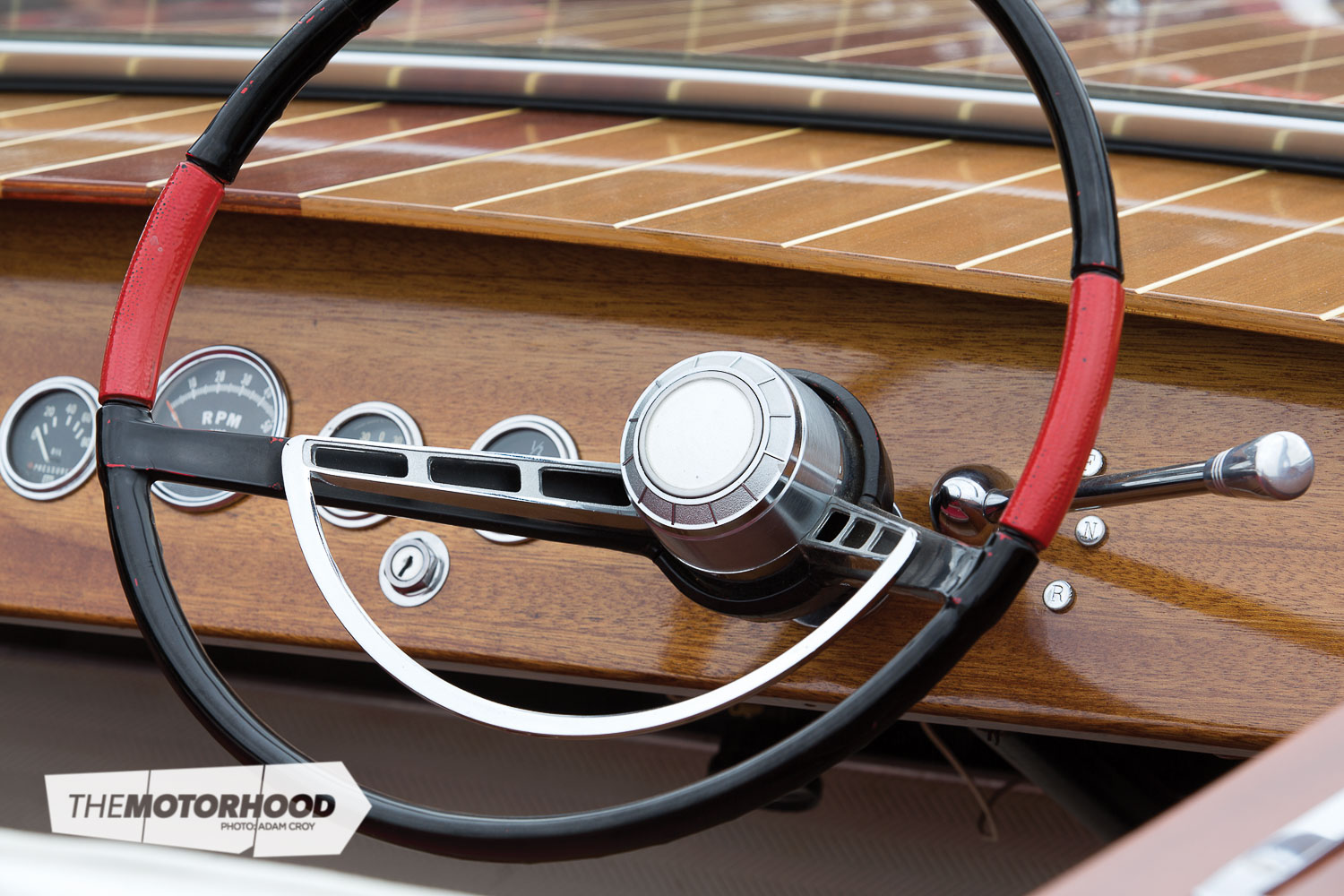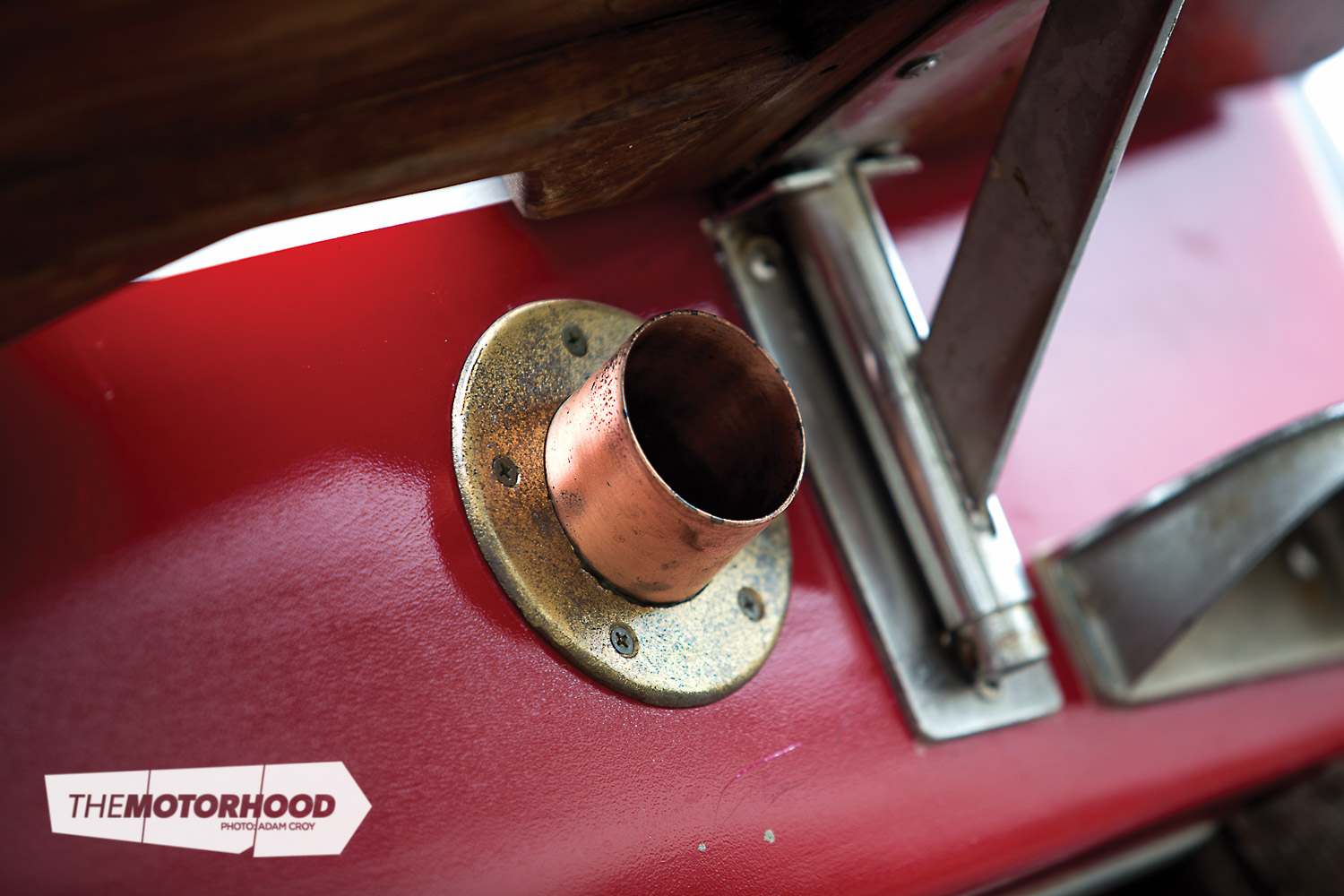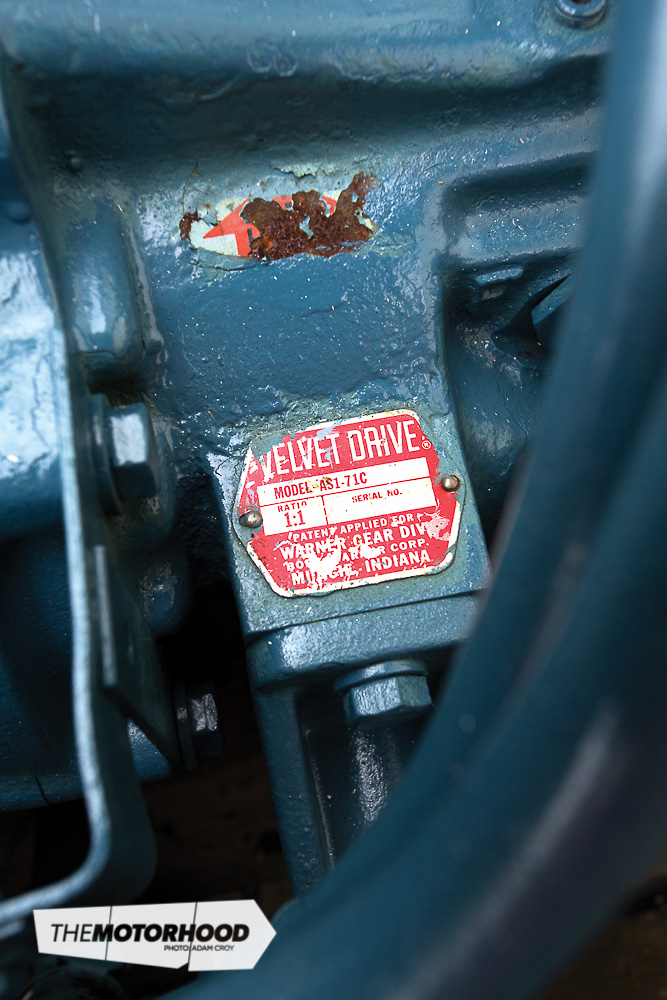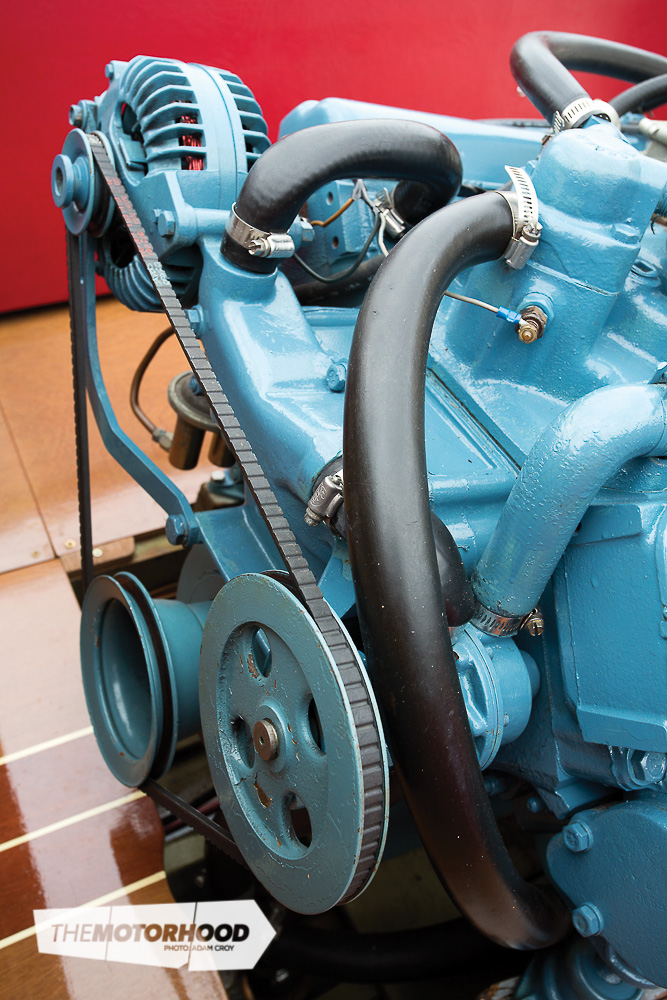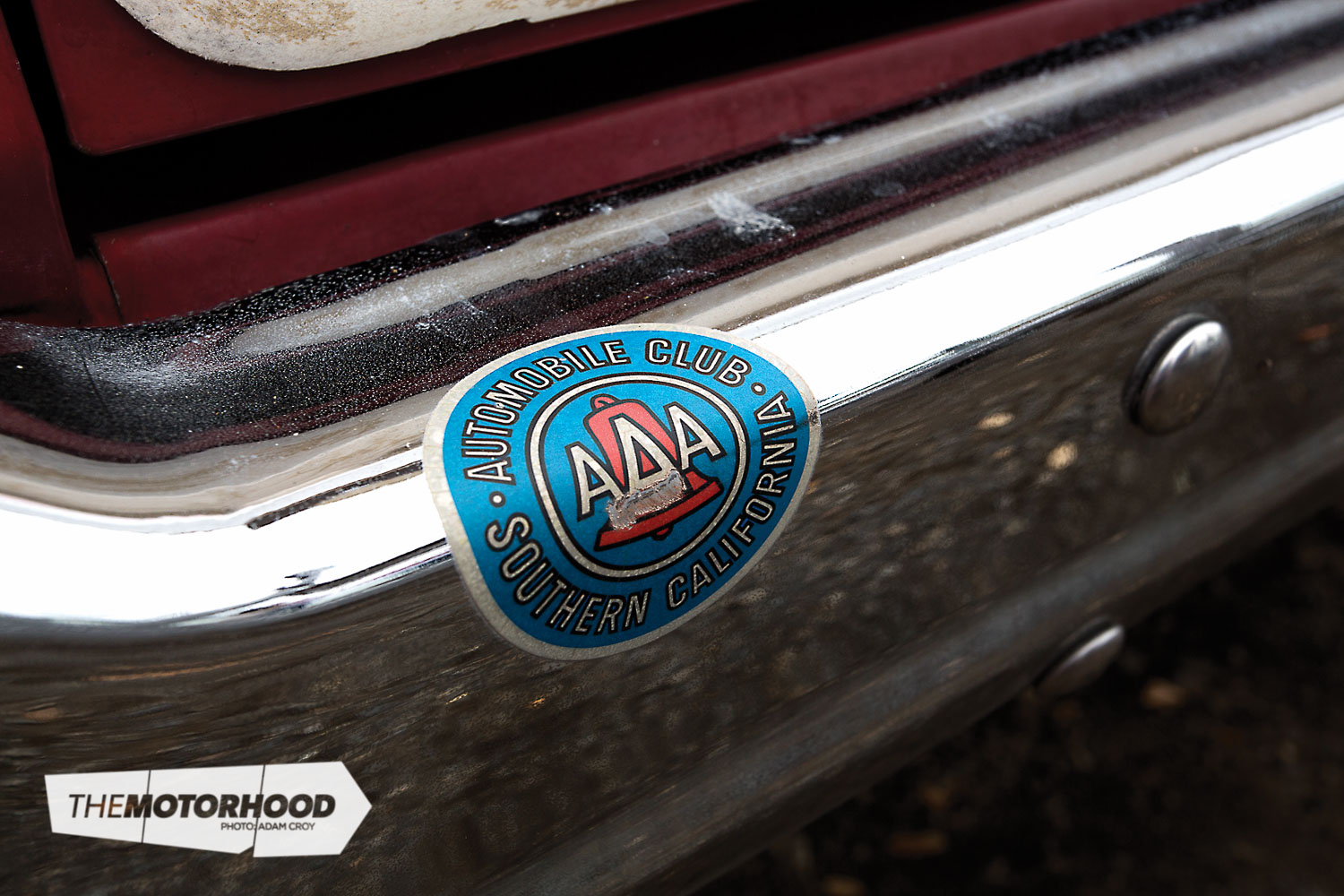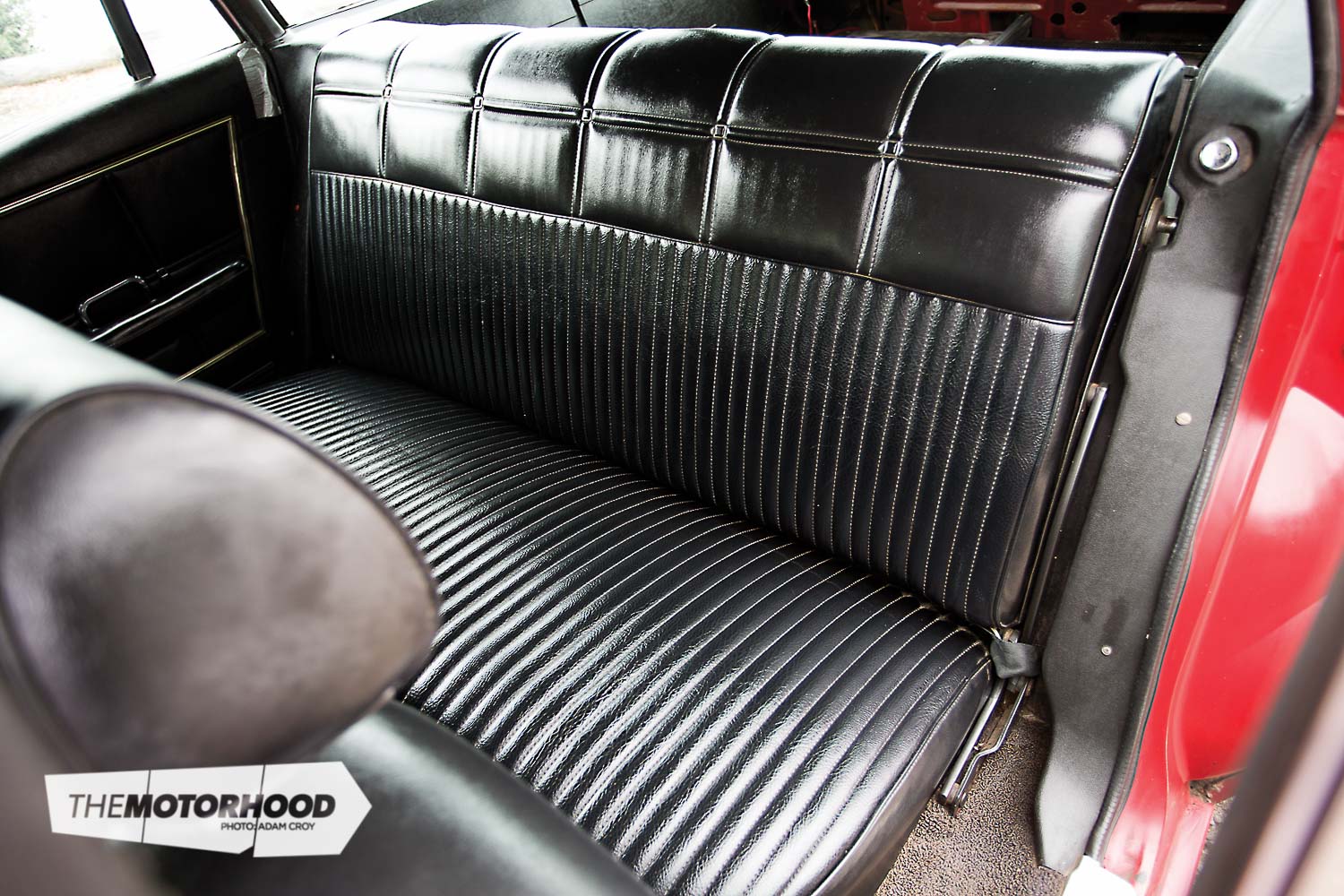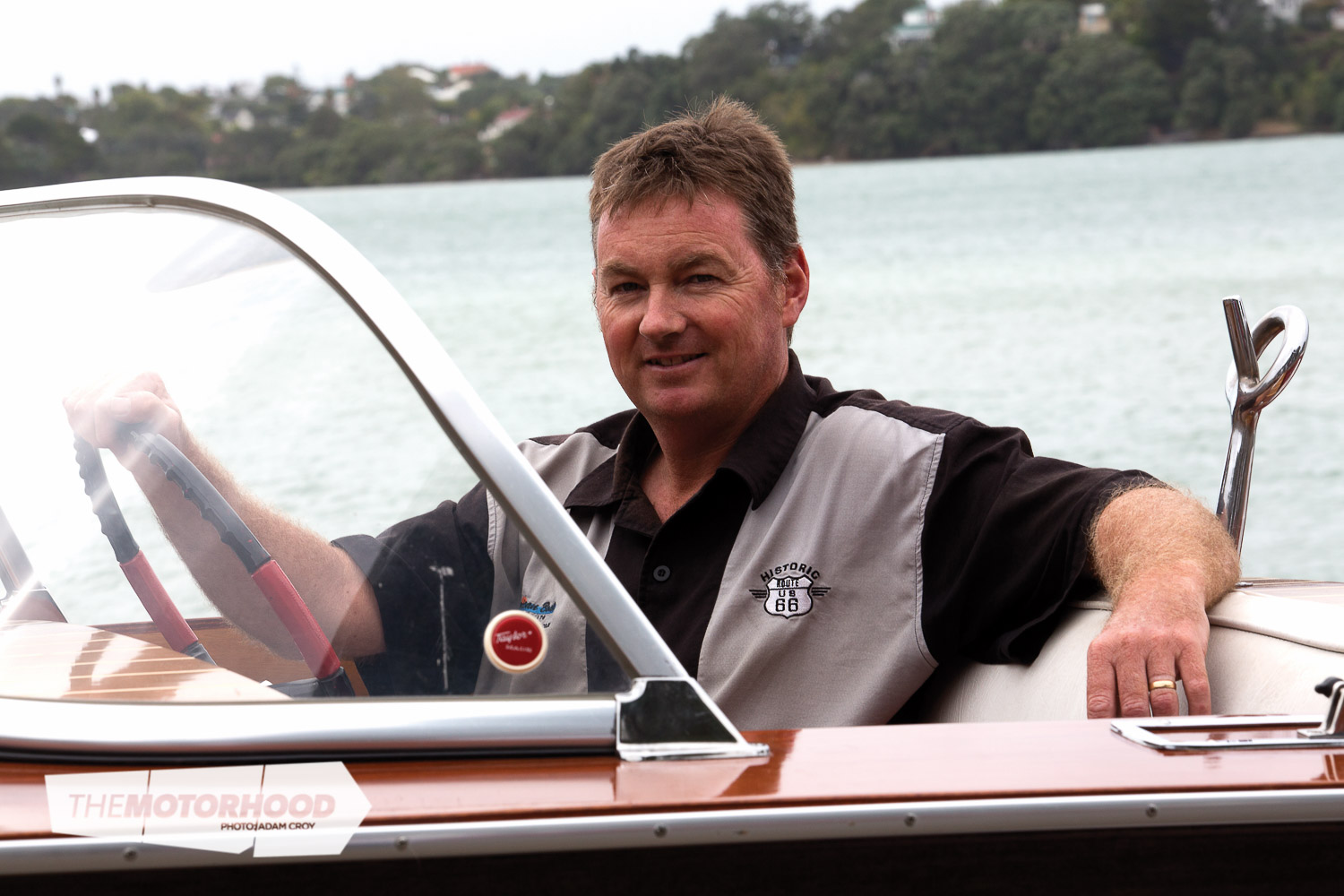If you ask anyone who knows me reasonably well, they’ll more than likely tell you I have a real passion for originality when it comes to classic cars. And when I say originality, that’s exactly what I mean. In today’s world of megabuck restorations – and I drool over them just like anyone else – it’s refreshing to see good classics that have survived the test of time, proudly wearing their original battle scars to prove it. Often referred to as ‘survivors’, these cars are endowed with what is generally known as ‘patina’, and they’re actually few and far between, especially when you take into consideration the age of some of these cars.
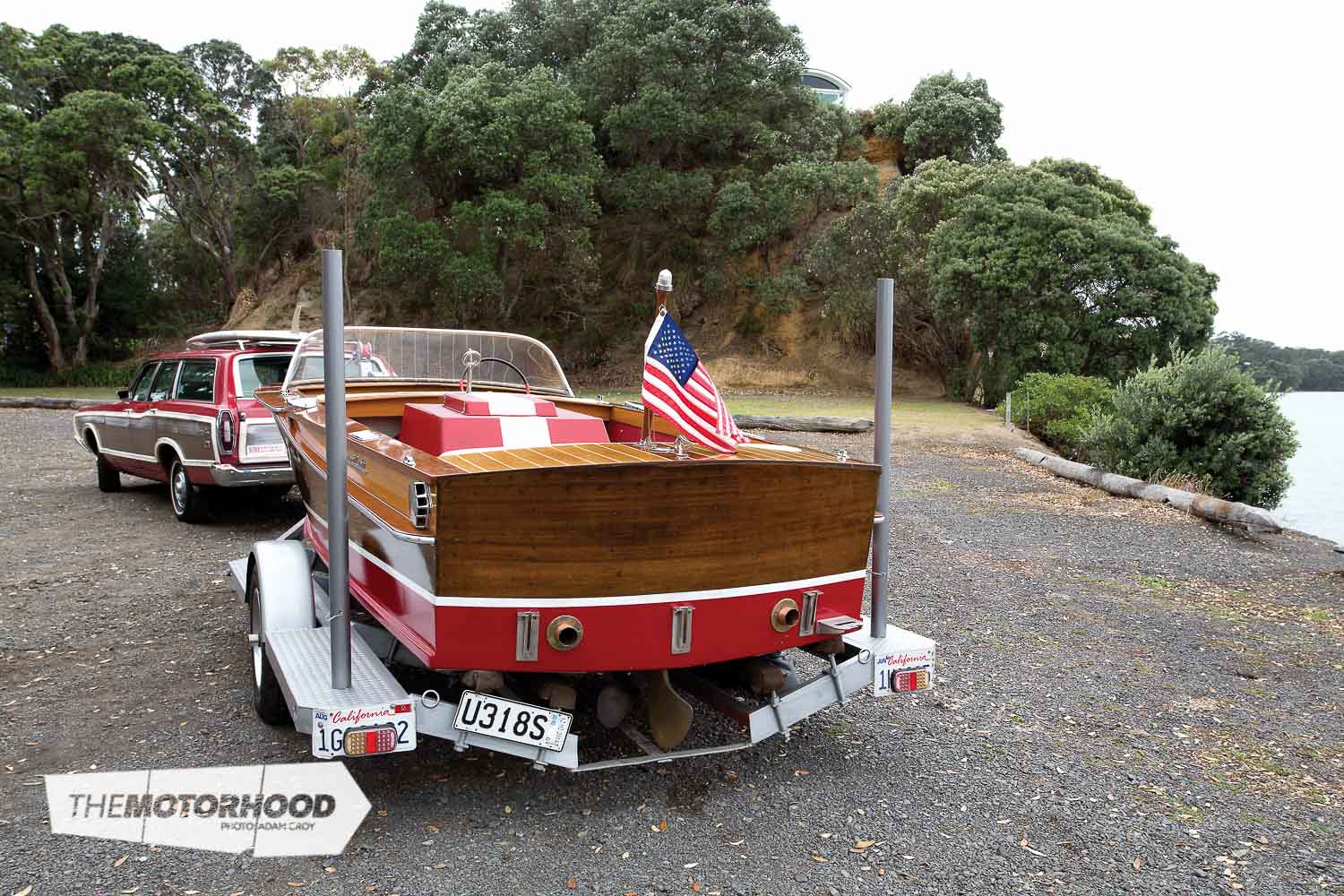
What is patina you may ask? According to the Concise Oxford Dictionary, patina is described as any distinctive surface appearance over time, in our case referring to the condition of the outside of the car, mainly the paint. Many would say that the latest trend in classic cars seems to be patina. This is confirmed from what I’ve seen – in particular there’s a growing craze for the ‘barn find’ look as an antidote to classic cars that have been either fully restored or, as some would have it, over-restored. Plainly, not all classic car enthusiasts are aspiring to a concours look, and for a growing number of collectors – such as Robert Pegler, the owner of the insanely original 1969 Ford Torino Squire wagon – originality is king.
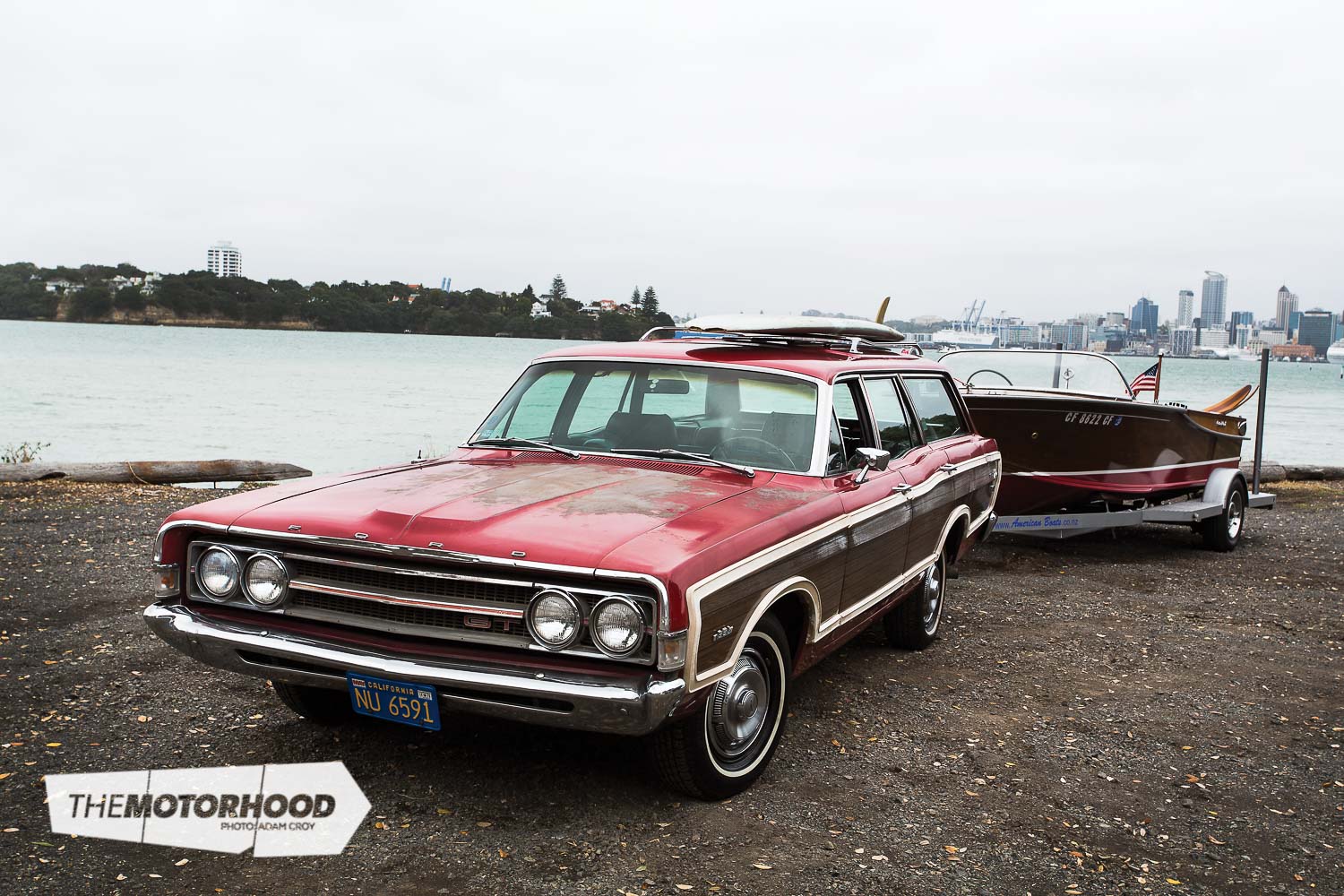
These are classic car owners who are trying their utmost to preserve as much of the original vehicle as possible. Sure, the chrome may show signs of pitting along with a few scrapes here and there, the sunburned paintwork may lack the lustre of bygone years, and worn stitching on some interior panels and upholstery may well have seen better days. However, the important factor is that, when viewing these cars, what you’re looking at is the original car, warts and all.
For me, when I think of patina, I think of a vehicle that’s been unmistakably enjoyed by a previous owner. A car that may have a few scuff marks, but something that still can serve as a daily driver and yet be nice enough to show up at any club run or meeting and fit right in.
Robert’s Ford Torino Squire wagon is exactly what I’m talking about.
No, it’s certainly not the most desirable or collectable car we’ve ever stumbled across, but when you take into consideration this car’s history, then it’s easy to appreciate the special appeal of such a vehicle, especially when it simply oozes character and patina.
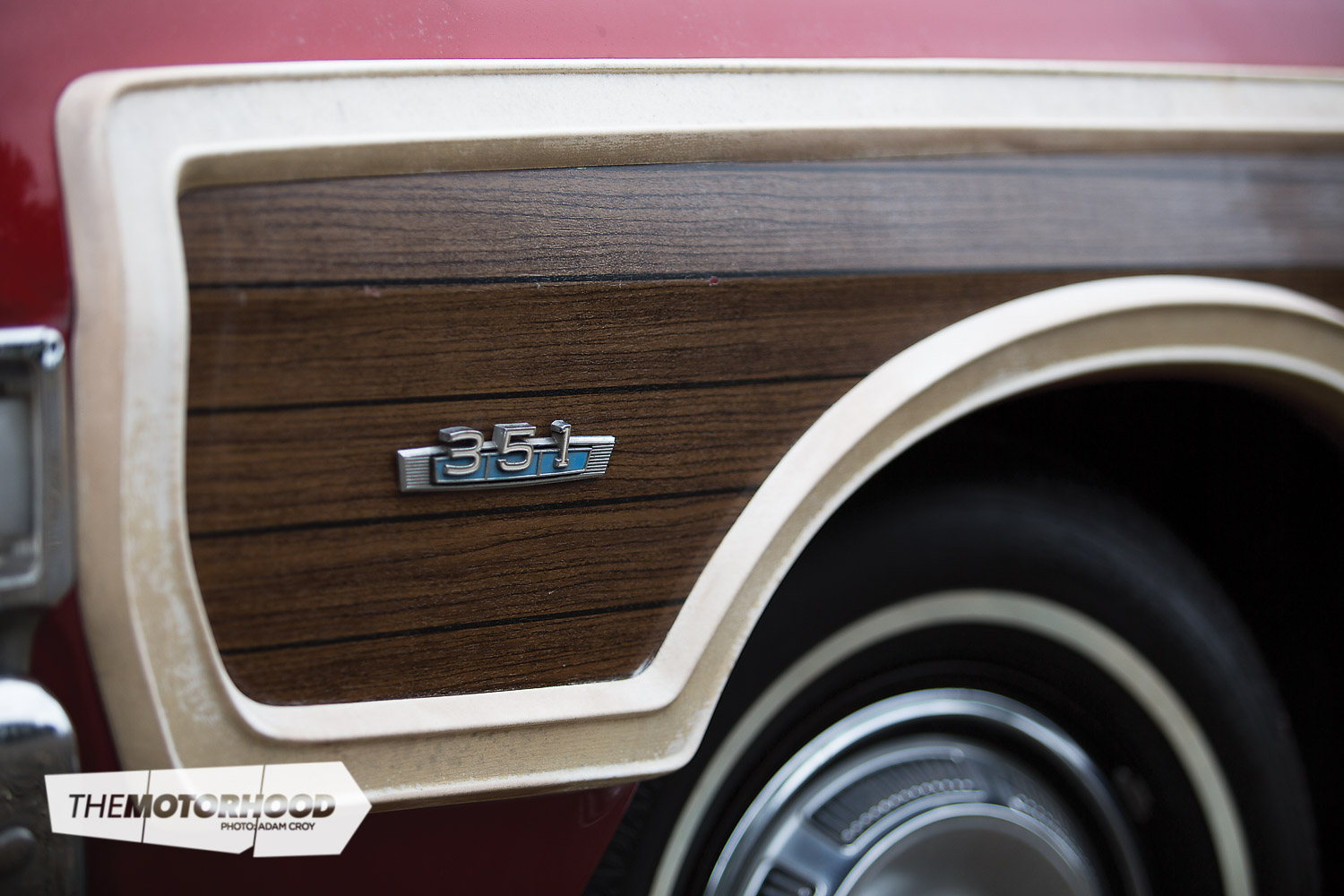
The options game
Back in the day, Ford certainly gave punters a plethora of makes and models to choose from – in 1969, Ford dealerships across the US offered a choice of no less than 14 different models in its line-up, excluding Mustangs. For starters, the base model was the Fairlane, which was available as either a two-door hardtop, four-door sedan or four-door station wagon. Break out a few more dollars and you could get yourself up to the next level on offer, the Fairlane 500, which was also available as a two-door hardtop as well as a two-door fastback ‘Sportsroof’, a convertible and a four-door sedan and station wagon.

For those wanting to impress their neighbours, there was also the option to select the top-of-the-range Torino – available as a two-door hardtop, four-door sedan or as the Squire station wagon. Rounding off Ford’s comprehensive vehicle offering that year was the sporty version of the Fairlane 500 series, the two-door hardtop, Sportsroof or convertible Torino GT.
As previously mentioned, Ford’s range of station wagons came in three different flavours – the base Fairlane, the Fairlane 500 and the range-topping Torino Squire.

All these wagons were optioned with Ford’s ‘Magic Doorgate’ three-way tailgate and were available with an optional rear-facing third seat that increased the car’s carrying capacity from six to eight people.
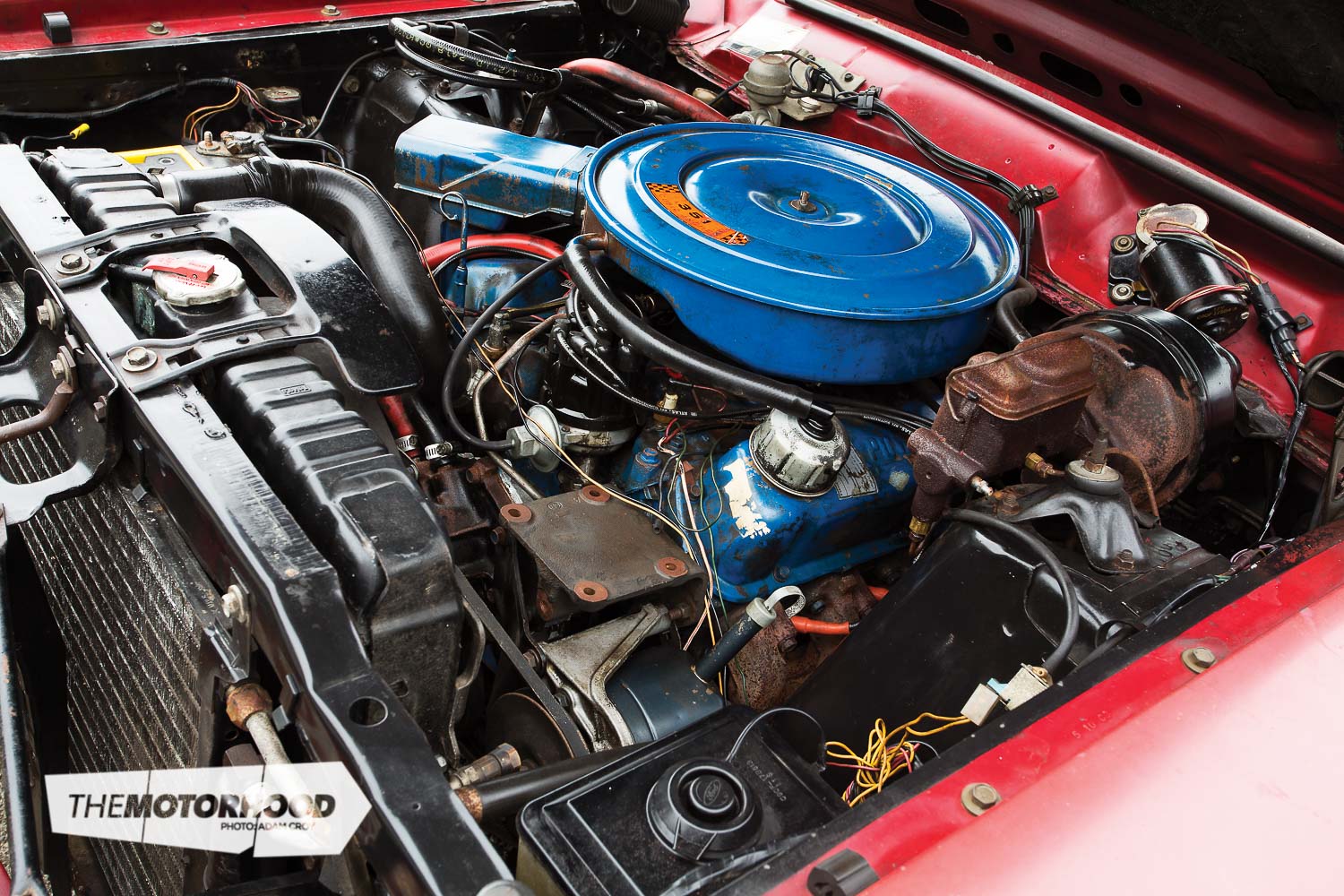
The Torino Squire (as featured) used imitation woodgrain down the flanks and across the very wide tailgate and boasted more refined trim and upholstery as found in the Torino sedans. Other unique options included a chromed roof rack and power rear window.
Ford also offered a fairly decent range of engine options in its lineup, including the base 200ci (3.3-litre) six-cylinder engine which was standard on all models. Of course, engine options also included Ford’s 351ci (5.8-litre) Windsor V8 – however, out of the total 14,472 station wagons built, it’s believed that less than 5000 received the V8 option.

All original
Our featured Torino Squire is one of those rare wagons fitted with the Windsor V8, and, along with the rest of the car’s running gear, Robert’s Ford is completely original and numbers matching, having travelled just 120,000 original miles (193,121km) during the 45 years since it rolled off Ford’s production lines.
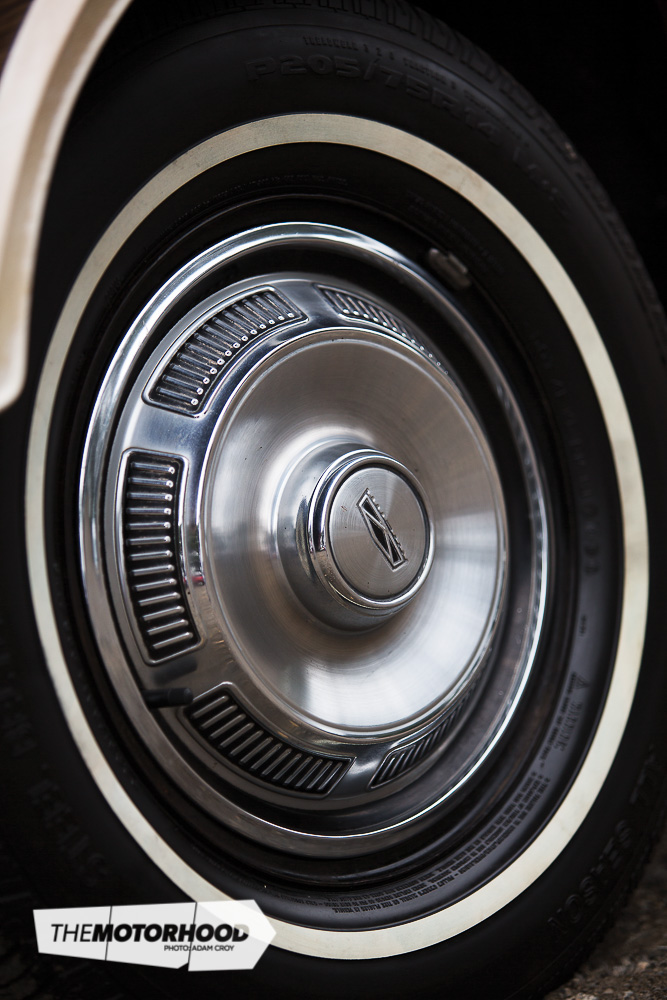
The best part about this car, in my view, is the fact Robert acquired it as a genuine one-owner car; that first owner being a genuine ‘little old lady’, Doris Rose Worden of Long Beach California. Doris drove the car until well into her 90s, when her licence was revoked due to old age and following a minor accident which resulted in a bent front bumper (since replaced).
Consequently, the Torino had been parked up since 2007, when it was last registered and tagged until Robert discovered the car and arranged for it to be shipped to New Zealand late last year.
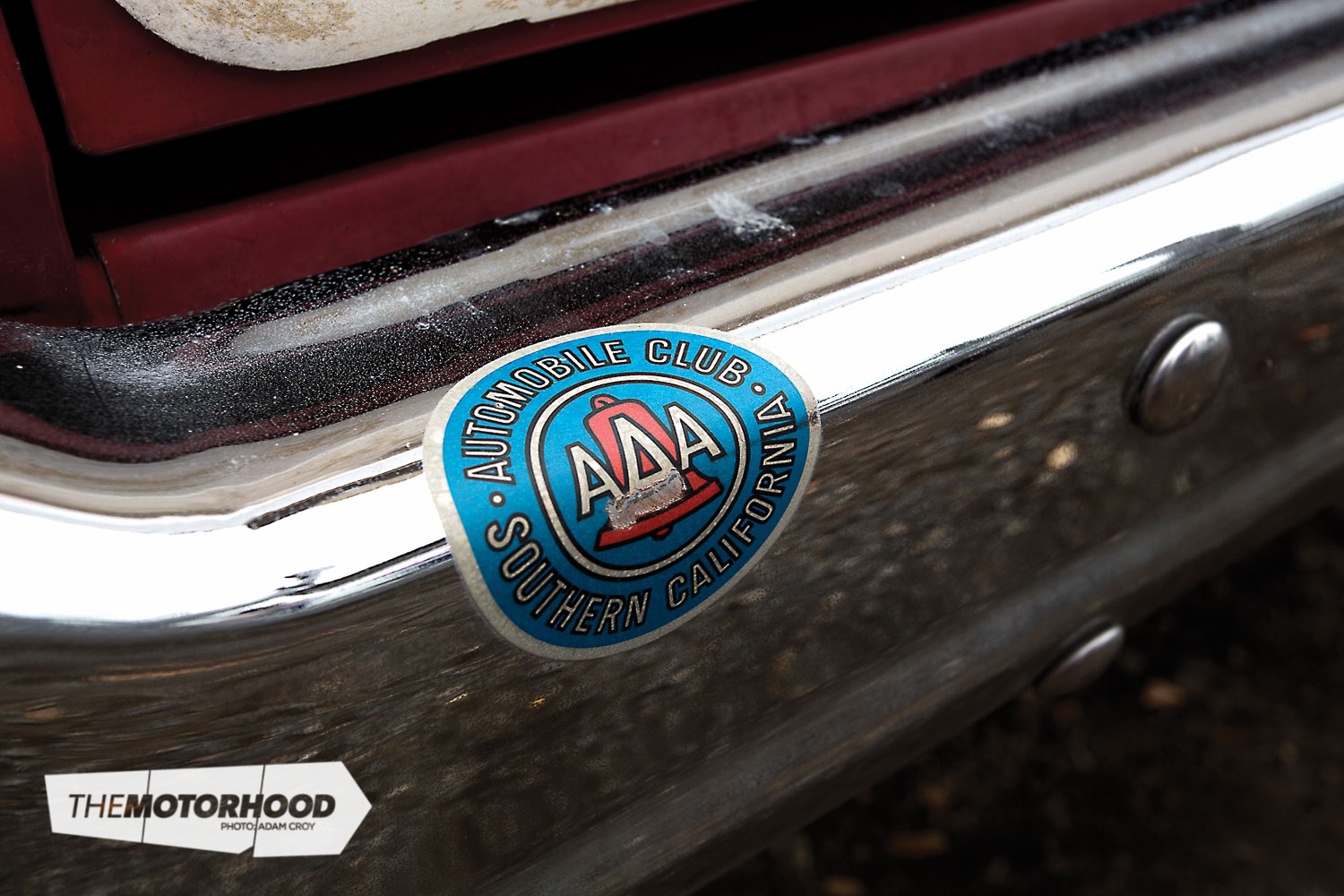
According to Robert, the car (and Doris) spent all its life in California and, indeed, the Torino still wears the original retrofit type of emissions control installed due to Californian smog testing. Also still attached to the car’s rear bumper is a sticker placed there by Doris – ‘RETIRED: Don’t ask me to do a damn thing!’ As Doris’ husband was a retired serviceman, she must have felt the sticker was appropriate due to his many years of military service.
Robert’s future plans for his Ford Torino Squire wagon include undertaking some minor restoration work whilst keeping the car as original as possible. He intends using it as a tow vehicle for his genuine 1969 Dodge Daytona on trips to Hampton Downs for demonstration laps. Robert has one or two other rare beasts hiding away (all glowing with an original patina, of course), so we’ll just have to pay him another visit at a later date.
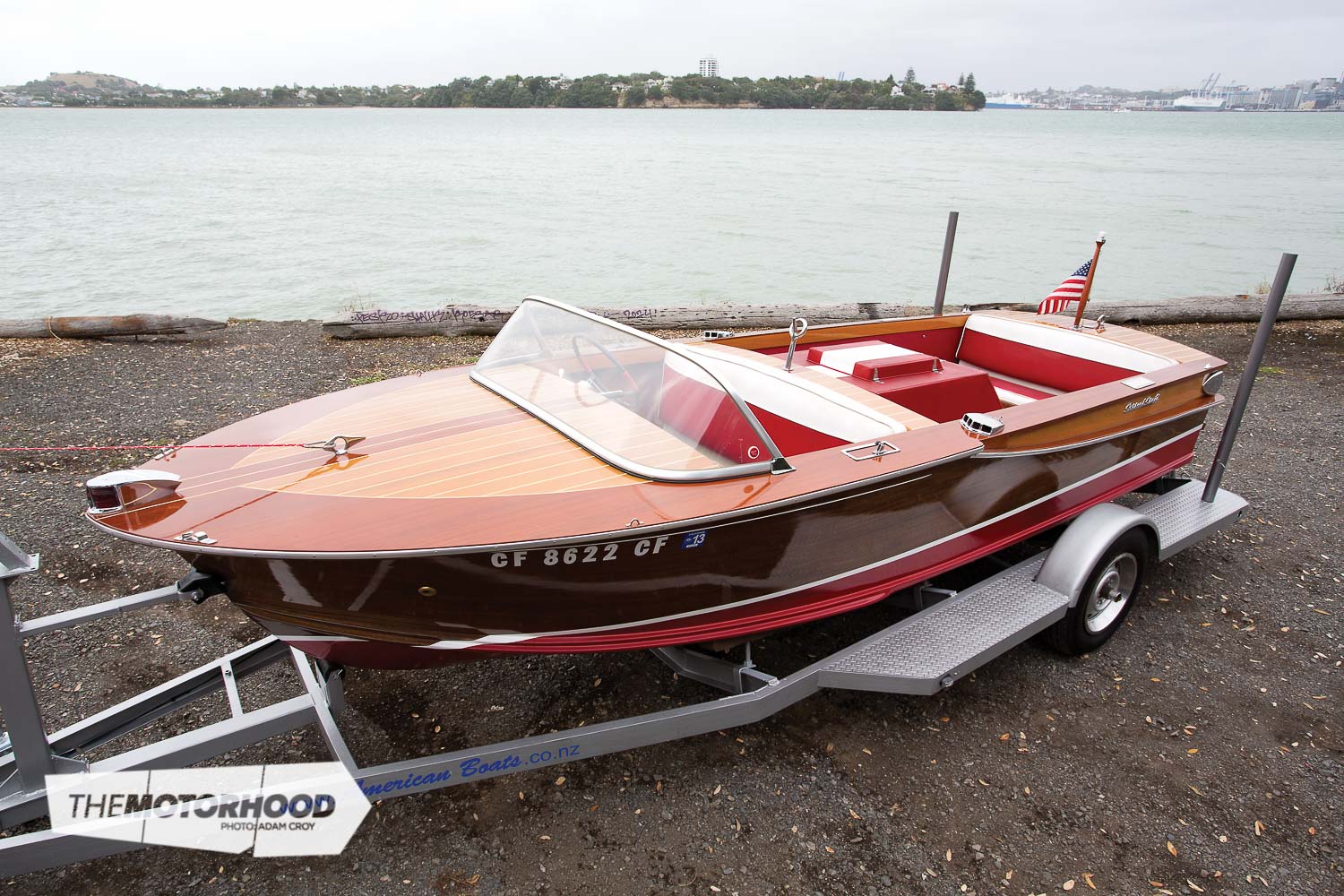
Pushing out the boat
By now you’re probably wondering about the fabulous-looking ’60s American speedboat hooked up behind Robert’s wagon. In actual fact, it belongs to his good friends, Nigel and Maria Teape. Ironically, the wagon and speedboat look as if they were literally made for each other with virtually identical, matching colour schemes and both originate from a similar period. Nigel tells me he’s tried to buy the Torino Squire wagon from Robert on more than one occasion, but without much success, as Robert is quite keen to hang onto the Ford. As such, Nigel may just have to be content with borrowing the car on the odd occasion for the purpose of towing his magnificent 1963 Correct Craft Aqua Deluxe skier, believed to be the only genuine example in New Zealand.
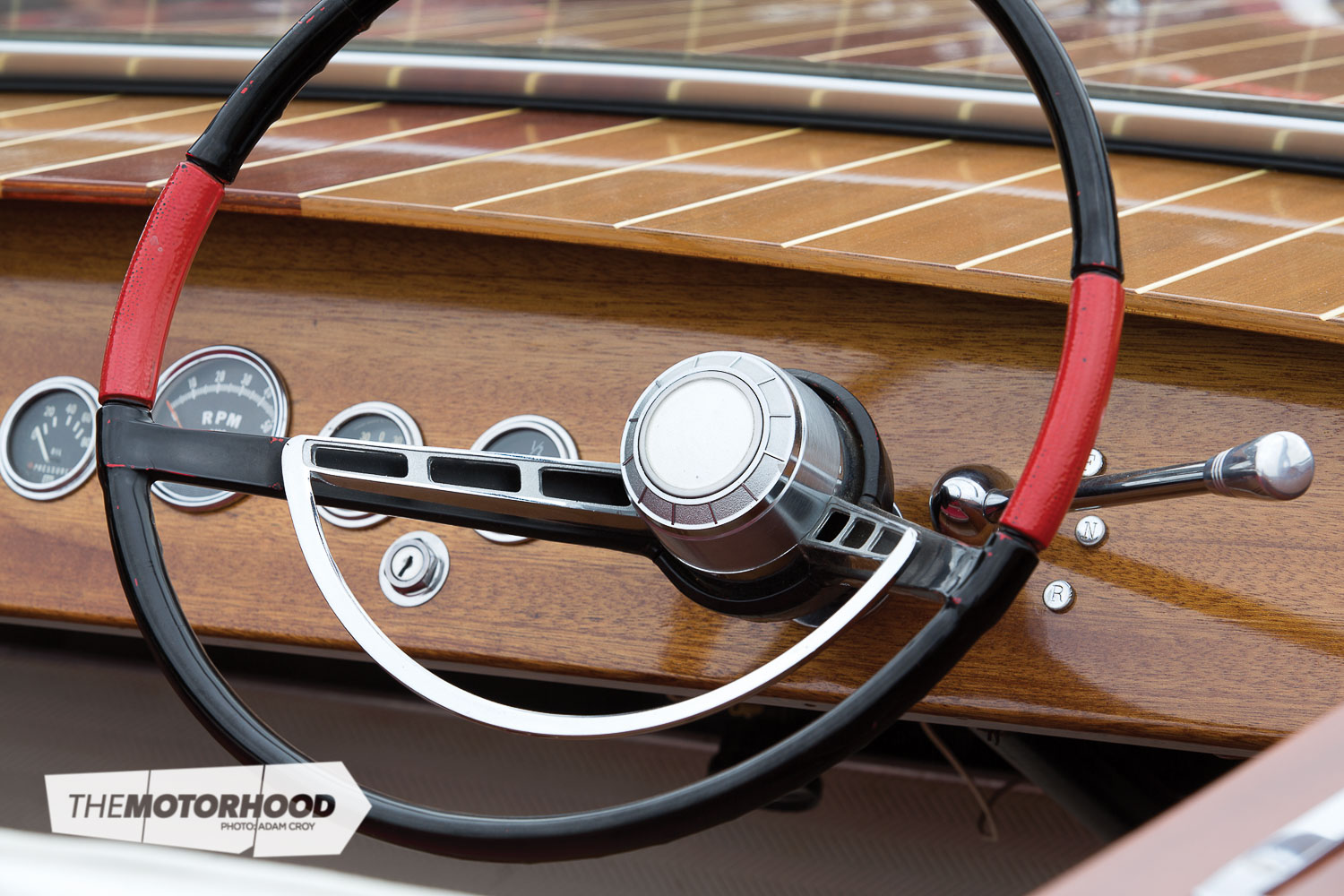
Nigel is definitely no stranger to American boats – in fact, he sells them for a living and works for American Boats Direct Ltd at Auckland’s Bayswater Marina.
Nigel had been searching for this particular style of boat for over two years, and when his company’s Californian-based boat buyer discovered this 1963 19-foot (5.79 metres) Correct Craft Aqua Deluxe Skier in Lake Arrowhead, California, Nigel knew it was the boat he’d been looking for and shipped it to New Zealand in November last year.
This stunning antique mahogany centre- engine ski boat has had only two previous owners and is built entirely from top-grade mahogany, with no less than seven coats of clear varnish, all having been lovingly restored to original condition in 2008.
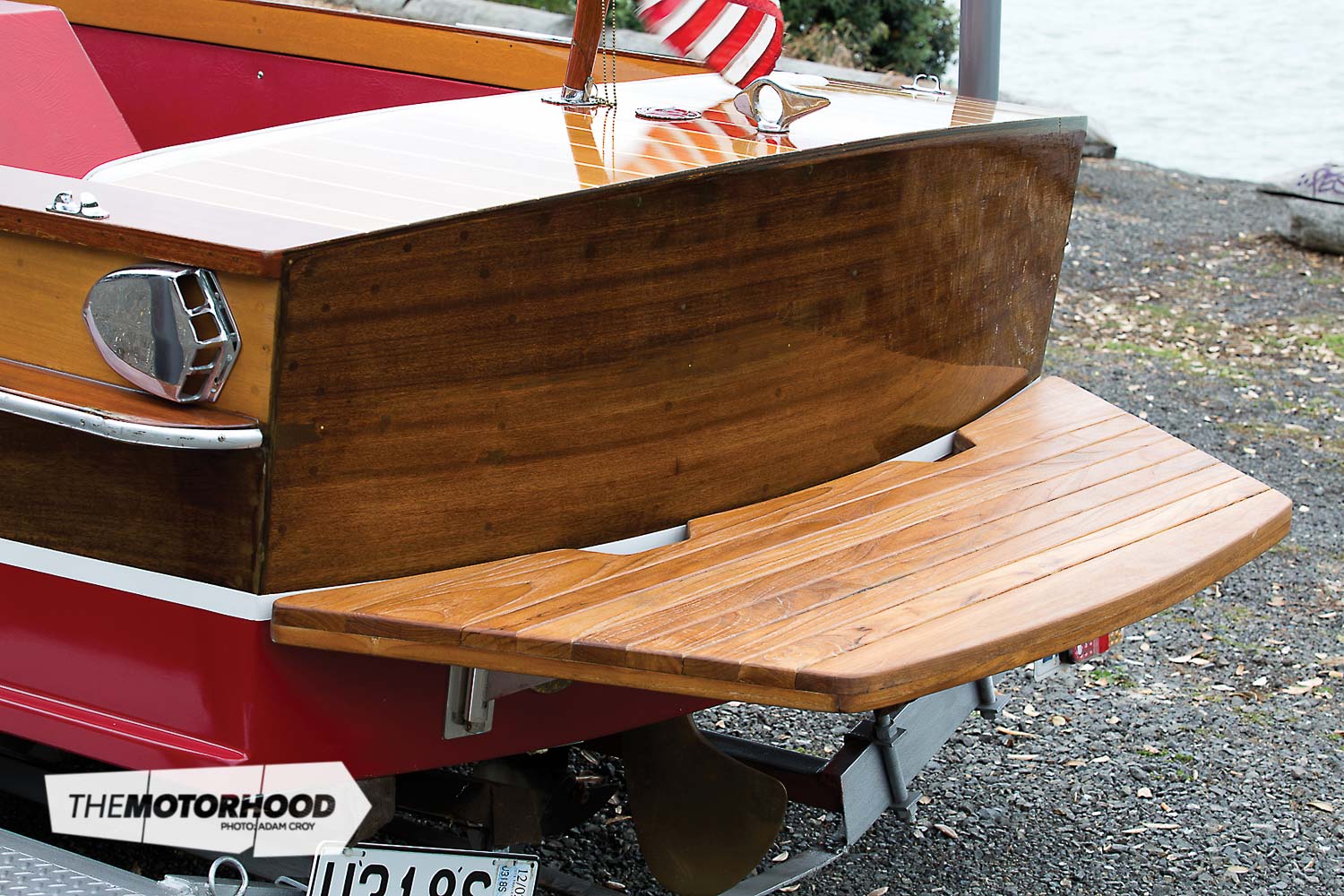
Originally constructed by the Orlando, Florida–based boat builder Correct Craft, this Aqua Deluxe Skier was originally built to order specifically to pull multiple skiers at exhibition shows. In order to tow such a load, this Correct Craft was optioned with the 210bhp (157kW) four-barrel Chrysler 318ci (5.2-litre) Poly (big block) V8 engine with ‘Velvet Drive’ transmission and shaft drive with rudder steering.

This option provides oodles of low-end torque and the handling capability to pull multiple skiers at speed and with ease – the set-up being operated with a foot pedal throttle for quick response for the benefit of the skiers, while the gear lever is positioned off the column.
Originally, the Florida Variety Boat Company, Correct Craft started building boats in 1925, having been founded by Walt C Meloon. During those early years, the company built a wide choice of boats ranging from sailing boats to power boats and race craft. In 1936, the company changed focus and concentrated its efforts on building just powerboats, and the name was officially changed to Correct Craft. Since then the company has continued to prosper, developing a reputation for building boats of superior quality and excellent performance.
Our featured Correct Craft was delivered new to Lake Tahoe, where Sierra Boats Works cared for it for many years before it moved to Donner Lake, California, where the second owners, Gary and Peggie Brandt, purchased it in 2008.
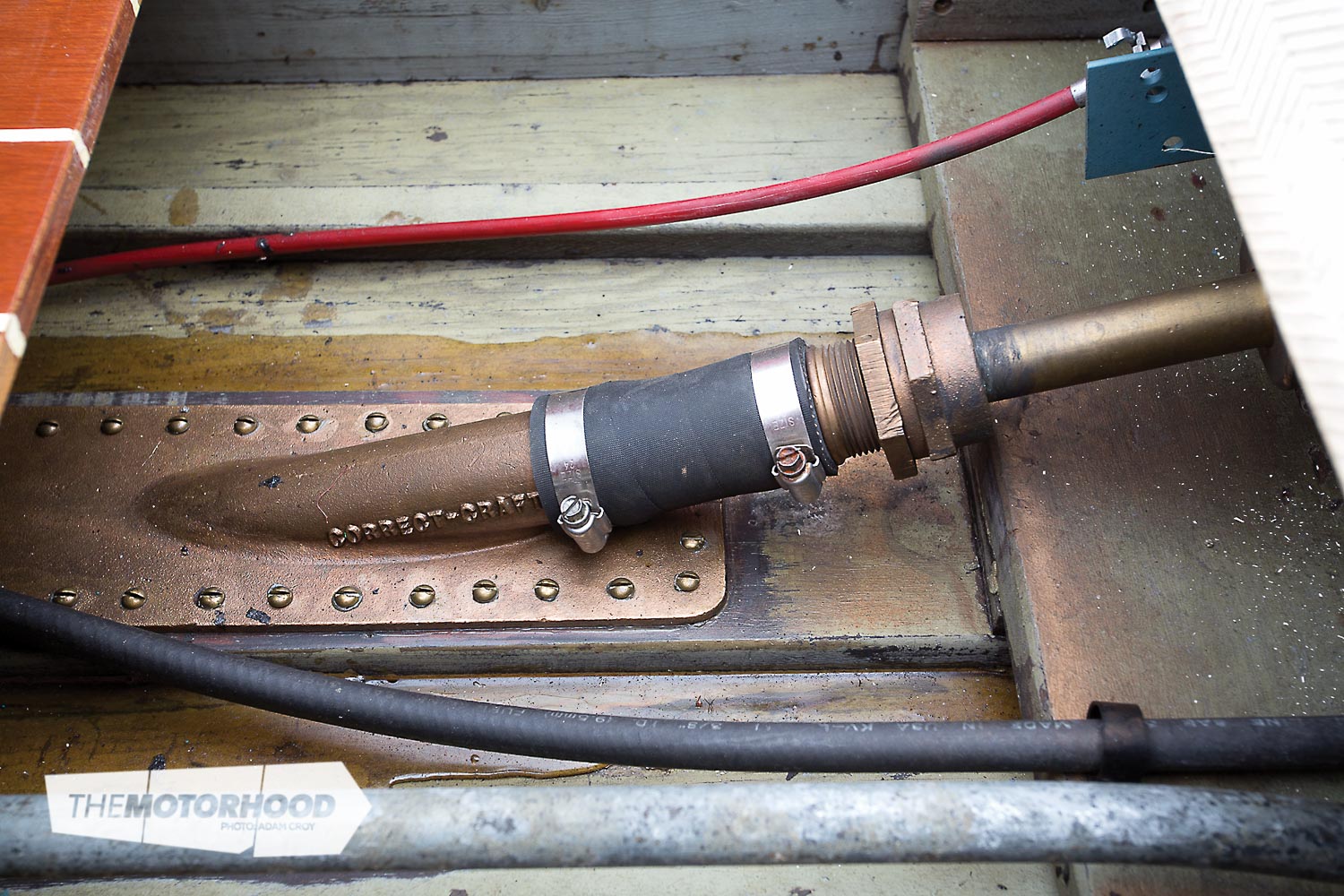
They subsequently moved the boat to Lake Arrowhead where Gary undertook an extensive ground-up restoration. The internal ribs and inside of the hull were varnished (originally unfinished and covered) before the boat was flipped over. The underside of the hull was refurbished and coated in West System Sterling Racing paint. In addition, new floorboards were added with loads of access hatches to allow easy access to areas of the floor for easy maintenance and checking. A new removable teak swim platform was added as well as a ‘Bimini’ top for those sunny days. New top decks were fitted and lavished in 12 coats of varnish. The Correct Craft still wears its all-original red-and-white upholstery including original white rubber mats and original gauges.
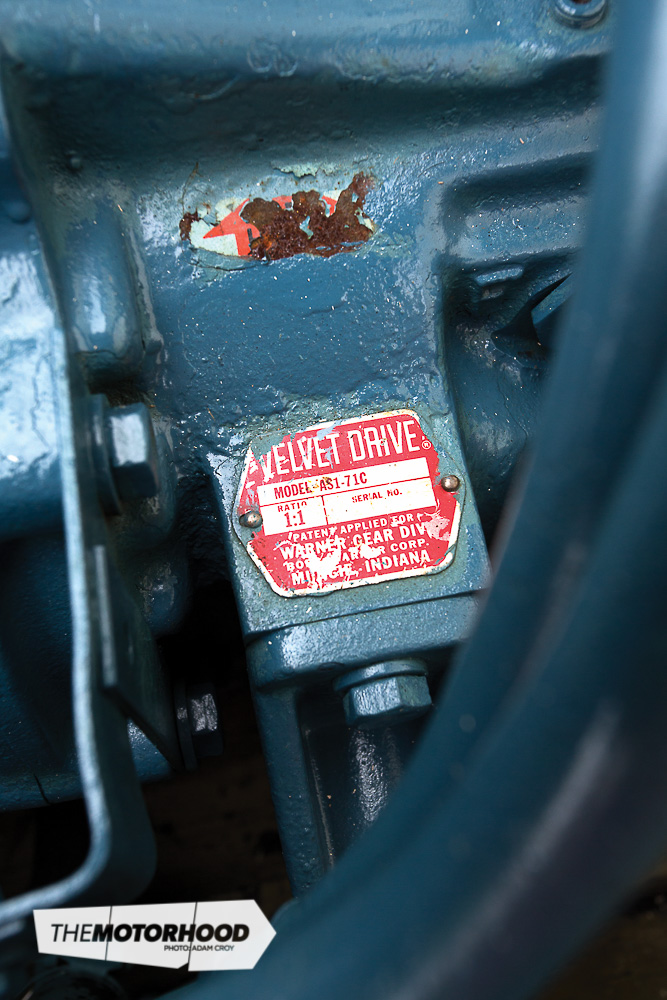
The original, matching numbers Chrysler V8 engine and Velvet Drive transmission were also pulled out and fully rebuilt. According to Nigel, many aspects of the restoration details are better than new. Nigel also told us the original tube frame trailers used for these boats were marginal at best and the craft’s new owners decided to play it safe and specified a 1972 Norcal trailer customised specifically for the boat. As stated earlier, it took Nigel’s US boat buyer well over two-and-a-half years to find this example. Many were fitted with smaller, less-powerful six-cylinder engines, and restoration can cost tens of thousands of dollars. Luckily, his particular example has received many hundreds of hours of meticulous workmanship, not to mention having had almost US$20,000 poured into its restoration, so all the hard work has been done.
To date, Nigel’s boat has never seen salt water and has only ever been used in fresh water – as tempting as it may be to drop it into our beautiful Waitemata Harbour on a fine day, Nigel is adamant that like the craft’s previous owners, he’ll only use it in fresh water. Although, overall, he reckons it’s “too bloody nice to put in the water!”
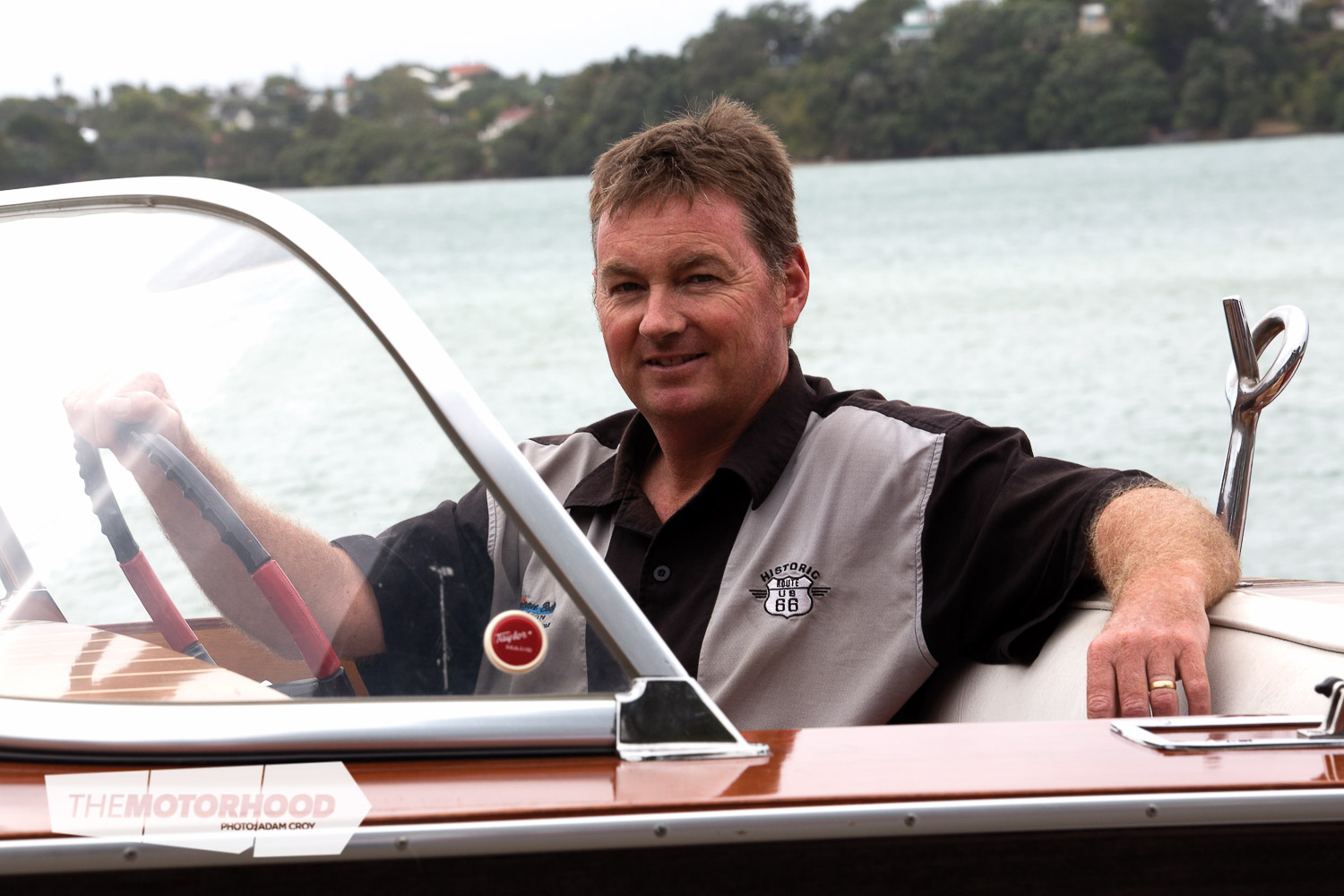
Since Nigel has owned this stunning Correct Craft he and his family have taken it to several cars shows, including Auckland’s Galaxy of Cars and the Bayswater Auto Show, where it received many very favourable comments from show-goers.
Over the recent Easter weekend, Nigel couldn’t resist the temptation to try out his new toy at the Elbow (on the Waikato River, behind Pukekohe). The Correct Craft performed like a dream, with tons of power, and managed to clock a respectable 80kph. The V8 engine proved very responsive and never missed a beat. Nigel was thrilled to finally have the boat in the water and is already planning to spend some family weekends away at Taupo, Rotorua, and surrounding lakes, and take the kids skiing whilst enjoying the loud V8 symphony and pleasure of a bygone era. The union of Robert’s Torino Squire and Nigel’s superb Correct Craft makes for a truly desirable classic boat/wagon combination.
1969 Ford Torino Squire Wagon
- Engine: Windsor V8
- Capacity: 5752cc (351ci)
- Bore/stroke: 102.5x89mm
- Valves: Two valves per cylinder / OHV
- Max. power: 186kW (250bhp) at 4600rpm
- Max. torque: 481Nm (355lb/ft) at 2600rpm
- Fuel system: Two-barrel Autolite carburettor
- Transmission: Cruise-O-Matic three-speed
- Suspension F/R: Coil springs / solid axle with leaf springs
- Steering: Recirculating ball, optional power assist
- Brakes F/R: Power-assisted disc front / drum rear
Dimensions
- Overall length: 5309mm
- Width: 1915mm
- Height: 1397mm
- Wheelbase: 2896mm
- Kerb weight: 1740kg
- Performance:
- Max. speed: 185kph
- 0–100kph: 9.5-seconds
- Standing quarter-mile: 17-seconds
This article originally appeared in the May 2013 issue of New Zealand Classic Car. Pick up your print or digital copy below:



